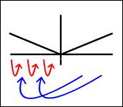“The invention of paper, and the history of paper making”
This video explains what writing materials were used by people before the invention of paper, how paper was invented, and how its usage has evolved over time.
The video is on the History Class channel.
Following are points from the video:
Materials used before paper
— Before the invention of paper, inscriptions were carved on bones and shells in China until around 500 BC, when they began to write on bamboo stalks.
— In India, inscriptions were carved on birchbark in the first century AD, and birchbark was also used during the Middle Ages in parts of Russia.
— Palm leaves were used in South Asia and Southeast Asia dating back to the 5th century BC, and possibly much earlier.
— Mediterranean civilizations used fired clay tablets for sophisticated accounting systems.
— Ancient Athenians scratched writing on broken pieces of pottery.
— Papyrus was used as a writing surface in Egypt from the 3rd Millennium BC. The word “paper” is derived from the word “papyrus.”
— Papyrus was also used by the Greeks and Romans until the first century BC, when it was replaced with “parchment” which is made from the hides of sheep, goats, and cows. Parchment was used until the Middle Ages.
The invention of paper
— The exact date of the invention of paper is unknown, but the earliest paper fragment was found in Fangmatan, China, which is part of a map that is dated between 179 - 141 BC.
— A Chinese court official named Cai Lun is credited for a method of paper making that was inspired by wasps and bees, using racks and other plant fibers in 105 AD. He became famous after his invention, and he was given a lordship of a small village, but he committed suicide in 121 AD after a false rumor spread that he intended to harm the newly ascended emperor An of Han.
— During the Middle Ages, the Chinese used paper for packing materials, toilet paper, tea bags, and paper money.
— The art of origami paper folding appeared in Japan in the 6th century.
— The use of paper rapidly increased throughout Asia during the early Middle Ages.
— In the 8th century, paper started to replace parchment as the primary writing material for administrative uses in Baghdad.
— The oldest paper document is Europe is the Mozarab Missal of Silos, which dates to about 1080.
— The first recorded paper mill in the Iberian Peninsula was Xativa in 1056.
— Paper mills were established in the Italian Peninsula and France at around 1300, and they spread to the rest of Europe during the next few centuries.
— In 1450, the German inventor Johannes Gutenberg developed the world’s first movable type mechanical printing press, which started the printing revolution that played a key role in the development of the Renaissance, Age of Enlightenment, and the Scientific Revolution, as well as laying the basis for the spread of learning by the masses.
— In 1774, Justus Claproth invented a process for removing the ink from used paper, enabling paper pulp to be recylced.
— In 1806, Henry Foundriner invented a paper-making machine that produced large continuous rolls of paper.
— In 1844, the Canadian Charles Fenerty and a German Freidrich Gottlob Keller invented a machine and process for creating paper from wood pulp.
— With the introduction of cheaper paper, the use of books, newspapers, and people writing on paper became much more widespread by the end of the 19th century.
— In 1922, sizes of paper formats were standardized, which enabled the use of standardized office equipment.
— During the 20th century, the technology of paper maker developed further to increase its quality and production speed.
— Now in the 21st century, paper is considered to be a cheap commodity where a lot of waste exists, and there is a trend toward sustainability in the paper industry.
Article Tree
| A Summary of the History of the World, in Videos |
| MISC HISTORY OF TECHNOLOGY |
| Video: “The invention of paper, and the history of paper making” |








